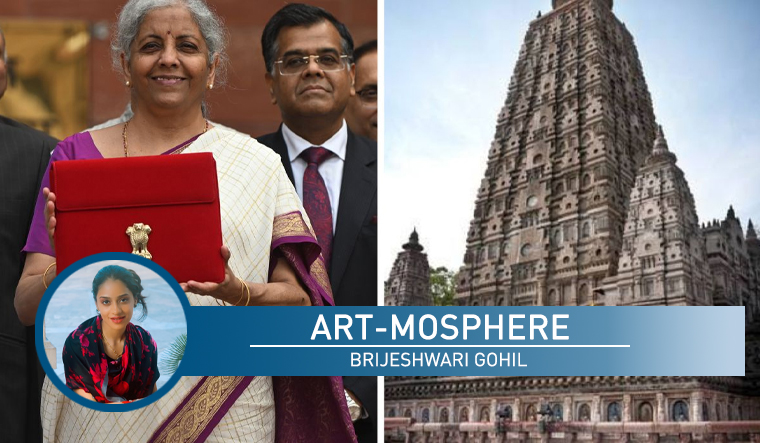The Union Budget 2024 may have divided opinions, but what remains steadfast is praise for Minister of Finance Nirmala Sitharaman's ivory Mangalgiri saree. With a beautiful red border, the Mangalgiri saree traces its origin to Andhra Pradesh, a state which has received vital resources for its agricultural needs during this budget.
As Sitharaman began discussing the importance of 'vikas' (development) and 'virasat' (heritage), I waited for the ministry’s promise of funds towards culture. Thankfully, there has been an increase in the allocation for the Archaeological Survey of India (ASI). From Rs 1,131 crore the body will be receiving Rs 1,273 crores. This number does sound promising and there is a considerable jump in the figures.
However, I do wonder if this is sufficient when distributed amongst the 3,697 monuments, which are under the custodianship of the ASI. There are also a number of factors to consider such as some of these monuments being part of public-private partnerships, as well as distributing this amount well between the various monuments which are in a very bad condition and are in need of urgent restoration. How would the allocation of funds be followed through?
The ASI is also not only limited to custodianship of monuments. There are also new excavations to consider. In a land as ancient as India, there is a sense of responsibility to organise excavations in the most sophisticated manner, which allows us to understand and trace human evolution and history. When adding all these elements, the allocated amount suddenly seems quite measly.
Further, much emphasis has been given to pilgrim and religious tourism with the announcement of state-of-the-art development at Bodh Gaya in Bihar as well as the revival of the ancient knowledge centre, Nalanda. This is definitely exciting given the rich cultural heritage the region has and the lack of preservation efforts that have been made so far.
But will this allocation be part of the ASI budget or would it trickle into the tourism budget of Rs 2479 crore rupees (a considerable boost from the previously allocated Rs 1692 crores). Furthermore, there is also a Rs 3260 crore rupees budget for the culture sector, slightly lower than that of last year.
Where and how would these funds be allocated? There is a considerable overlap in tourism, culture and the ASI. This includes but is not limited to historic monuments, religious sites, archaeological excavations, traditional arts and handmade crafts, music, and dance. The culture sector is vast and diverse. In order to successfully materialise these funds (an issue, which has often become a roadblock in the sector), there will have to be proper coordination and planning between these three key stakeholders.
For example, there is an added allocation of Rs 188 crore rupees for libraries and archives: a neglected arm of the culture sector. As a research student, one often struggles with accessing archival information. This has been particularly challenging with government archives, where permissions are a task to obtain and digitised material is seldom accessible from the comfort of one's home.
I am yet to see one well-archived, digitally accessible government archive in India.There is easier accessibility to information related to Indian history in the British Library in the United Kingdom or in JSTOR online in comparison to our nation’s archives where a repository of information is housed.
Perhaps these funds could be used to improve systems and make archives more accessible or create better, advanced libraries. Organisations like Eka Archives in India have garnered much respect and admiration for the manner by which they have archived private organisations and public institutions. Government archives have the power to become knowledge-sharing platforms and create a digital database with the help of such funds.
This would also lead to more jobs and employment for archivists and librarians. Building such infrastructure may further encourage youngsters to research and study in India rather than flee elsewhere.
Similarly, an additional Rs 123 crore has been allocated for museums. There are very few government museums in India, which are curated and designed to international standards. I do hope these funds are used for improving what exists rather than creating new and ghastly structures.
While we may have a treasure trove of artefacts and are legally aiming to bring some lost and looted back to the country, presenting these well and developing a narrative is what will enhance visitor engagement at museums, and allow more people to be culturally informed.
Management and maintenance are essential for the successful functioning of museums, archives and libraries. The boost in funds throughout the culture sector is exciting news but the way the funds are allocated and preservation, promotion and protection of cultural heritage takes place will be interesting to see. More so, since all eyes are on India with the current World Heritage Committee meet taking place in New Delhi this week and Prime Minister Narendra Modi announcing a whopping USD 1 million for the UNESCO World Heritage Centre.


